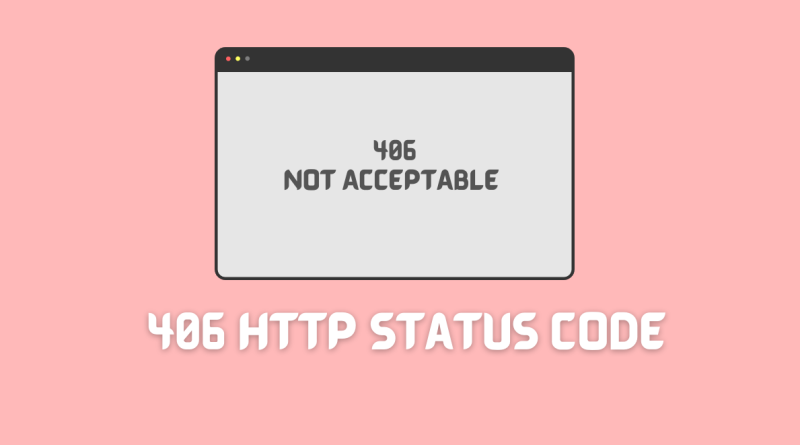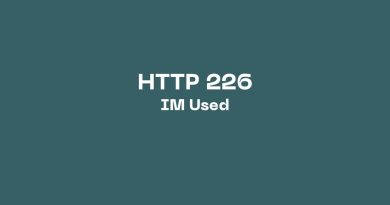406 Http: How to Diagnose and Fix the Not Acceptable Status Code
You’ve probably come across the 406 HTTP status code. But what is it? And more importantly, how do you fix it? In this blog post, we’ll answer those questions and more. We’ll also provide some tips on how to avoid running into this error message in the future. So, whether you’re a beginner or an expert web developer, read on for all you need to know about the 406 status code.
What is 406 http status code
The 406 Not Acceptable error is a HTTP response status code indicating that the server and web application cannot generate a default representation that would be acceptable to the user agent (client side). In other words, the user agent (i.e. the web browser) has requested a resource from the server side (i.e. the website) but the web server cannot provide a representation of that resource that is acceptable to the user agent.
This http response code is not very common like other http status codes such as 404 or http code 302. It is often seen when trying to access websites that are blocking access from certain geographical regions. In these cases, the website will only allow connections from user agents that specify an Accept-Language header corresponding to one of the approved geographical regions. If a user agent tries to connect from an approved region but does not specify an appropriate Accept-Language header, then the website will return a 406 Not Acceptable error.
Cause of 406 http status code error
This is usually due to the fact that the user agent has specified certain Accept-* headers in its request that are not compatible with the Accept header specified by the server. For example
- If the user agent requests a resource using the Accept: text/* header but the server only has an image/* representation of that resource, then the server will return a 406 Not Acceptable error.
- The client requests an image from a server that only serves HTML. The server is unable to determine the content type of the request.
- The client uploads an unknown file type to a server. The client incorrectly specifies the Accept header for the requested resource.
- If a client omits the / Accept header when requesting a JPEG image, it will receive a 406 error even though the server may be able to serve that image type. To resolve this issue, either add the / Accept header or explicitly set the Accept header for the requested resource type.
- Site file tables are created when you visit a site. They store information about the site, including the Accept-charset header. If you try to visit a site that uses a different character set than what is specified in the Accept-charset header, you may get a 406 not acceptable error. This is because the site is trying to serve you the wrong character set. To fix this, you need to change the Accept-charset header to match the character set of the site you’re trying to visit.
Server side or client side issue
The 406 not acceptable error starts with 4 such as 404 and any 4xx http response status codes which are considered client error responses. 5xx are considered server error responses, however, 406 error might be due to server-side issue.
The 406 not acceptable error is considered a server error response. This means that the server was able to communicate with the client but was unable to find a resource that matched the client’s criteria. In other words, the client requested a resource that the server could not find. This can happen for a number of reasons, including incorrect URL formatting or a mistyped URL. It can also happen if the resource you’re looking for has been moved or deleted.
The 406 not acceptable error is considered a client error response. This means that the client made a request that the server could not understand. In other words, the client requested a resource that does not exist.
Either way, the 406 not acceptable error is considered an error because the server could not fulfil the client’s request. If you see this error, it’s important to check the URL and make sure it is correctly formatted. You may also want to contact the website owner to let them know about the broken link.
How to fix 406 http status code error
1. Check your URL
The first step in troubleshooting a 406 error is to check the URL that you are attempting to access. Make sure that the URL is typed correctly and that there are no spaces or other characters that could be causing the problem. If you are still seeing a 406 error, move on to the next step.
2. Check your browser settings
Next, you will want to check your browser settings to make sure that they are not causing the 406 error. In particular, you should check the settings for cookies and JavaScript. Some websites require that these features be enabled in order to work properly, so disabling them could cause the 406 error.
3. Clear your cache and cookies
If you have checked your URL and browser settings and you are still seeing a 406 error, try clearing your cache and cookies. Sometimes, outdated information in your cache or cookies can cause problems with loading a website. Clearing this information should fix the problem.
4. Disable any ad blockers or firewalls
Another potential cause of a 406 error is an ad blocker or firewall that is blocking access to the website. If you have either of these installed, try temporarily disabling them and see if that fixes the problem.
5. Contact the website owner
If you have tried all of the above steps and you are still seeing a 406 error, the next step is to contact the website owner. They may be able to help you troubleshoot the problem or provide further assistance.
How to prevent 406 not acceptable error?
One way to help prevent the 406 not acceptable error code is by using a Content-Type header in your HTTP request. This will help the server to understand the type of data you are sending, and it can then respond accordingly. Additionally, make sure that your data is formatted correctly before sending it to the server. If you are sending JSON data, for example, be sure to use proper JSON syntax. Finally, if you are making an AJAX request, be sure to set the correct Accept header for the data type you are expecting in return.
All HTTP status codes by categories
Informational responses
(100 – 199)



